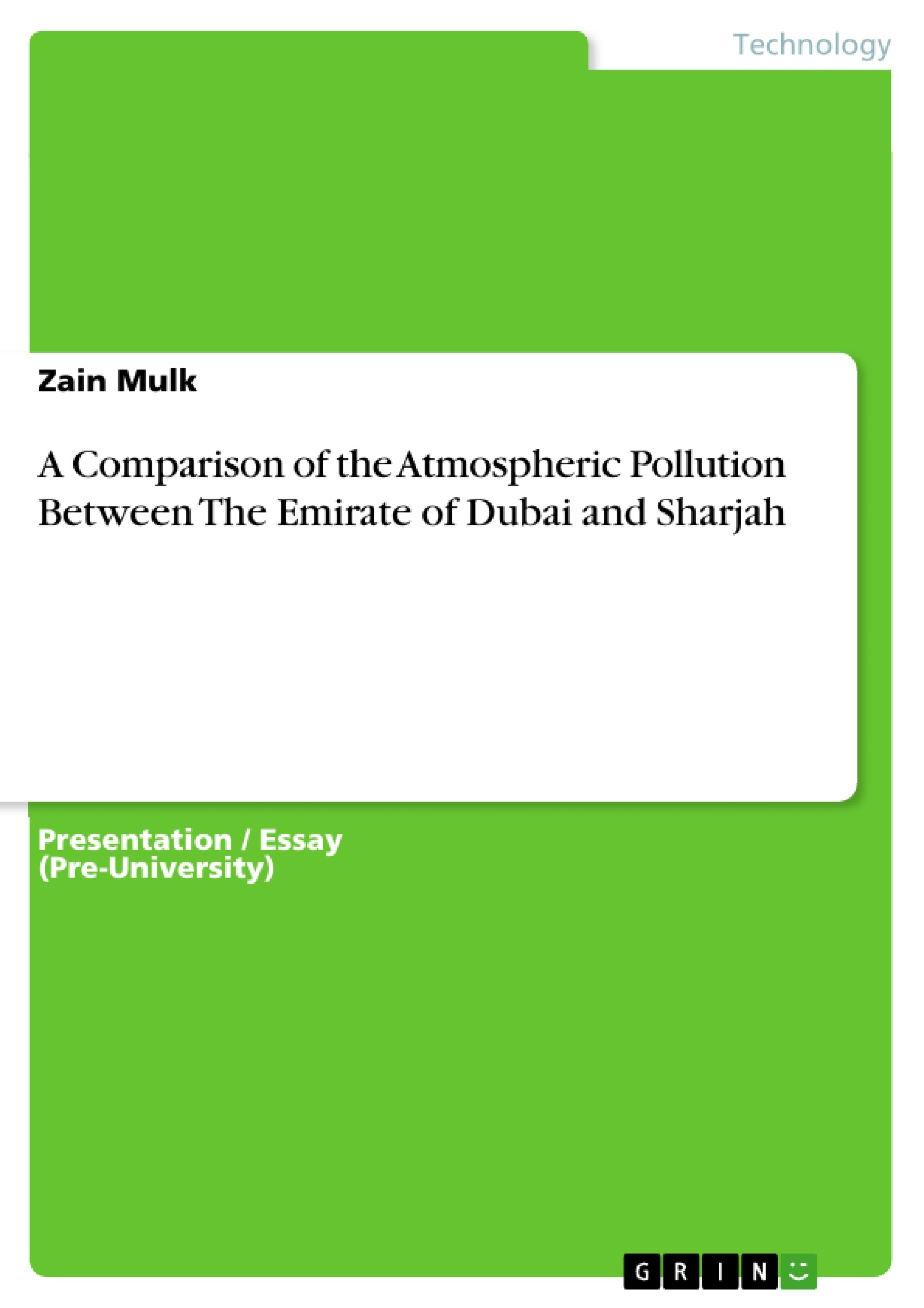This research essay will aim to differentiate the levels of atmospheric pollution between the two cities of Sharjah and Dubai through the usage of extensive primary data collection and established secondary data. There are six key factors: a general consensus, weather conditions and visibility, air pollution indices, traffic counts, city-specific lists and governmental data.
Air Pollution within the UAE is a prevalent issue and has been for decades on end. The situation only seems to be getting worse, due to the collateral effects of urbanization. Dubai expects to host 25 million new visitors, thus the city looks to expand its urban sprawl, taking into account new construction projects, a greater population influx and higher numbers of vehicular usage (motorisation).
Worldpopulationreview.com reported that Dubai's population has been increasing at a rate of 10.3% as of late 2016, making it one of the world's fastest-growing cities. Sharjah on the other hand, a city 30km away from Dubai, also seems to be expanding, through growing industrial activity and a greater number of labour and working-class residents settling in the Emirate within a relatively small surface area.
A high frequency of factories litter Sharjah's industrial areas, and densely packed traffic of heavy vehicles going to and coming from Dubai feed into the fumes released into the atmosphere. Moreover, both cities lie close to Dubai International Airport, one of the world's busiest and most crowded airports. Lastly, Dubai possesses a greater density of vegetation per sq km due to scattered golf courses, green neighbourhoods and public parks. As for Sharjah, it is clear that a majority of the land area is occupied by residential buildings, factories and offices; with fewer parks and vegetational cover.
It is evident that a myriad of factors come into play when determining the levels of air pollution between the two cities and it is crucial to compare the various effects and impacts of air pollution on the people of each city.
Table of Contents
- Introduction
- Aim
- Methodology
- Area of Study
- Area 1. Saheel Main Street, Arabian Ranches, Dubai
- Area 2. Jamal Abdul Nasser Street, Majaz, Sharjah
- Data
- Data 1.1: Questionnaire - Dubai residents
- Data 2.1 Traffic count (Dubai)
- Data 2.2 Traffic count (Sharjah)
- Data 3.1 - Visibility Photographs
- Data 4.1: Air quality index
- Data 4.2
- Conclusion
- Evaluation
- Weaknesses in this report.
- Strengths in this report.
- References and citations.
Objectives and Key Themes
This report aims to compare air pollution levels between Dubai and Sharjah, focusing on six key factors: general consensus, weather conditions and visibility, air pollution indices, traffic counts, city-specific lists, and governmental data. The report will also explore the health impacts of air pollution on residents of both cities.
- Determining which city is more polluted
- Analyzing the causes and effects of pollution in both cities
- Assessing the impact of pollution on the health of residents
- Comparing the scale and magnitude of air pollution in Dubai and Sharjah
- Evaluating the quality of air in both cities
Chapter Summaries
The report begins with an introduction highlighting the increasing air pollution in the UAE, particularly due to urbanization in Dubai and Sharjah. The "Aim" section outlines the report's objectives, focusing on identifying the more polluted city, analyzing the causes and effects of pollution, and assessing its health impacts. The "Methodology" section explains the research methods employed, including questionnaires, traffic counts, visibility photographs, and air pollution indices. The "Area of Study" section describes the chosen locations for data collection in both Dubai and Sharjah, highlighting their characteristics. Finally, the "Data" section delves into the findings of the questionnaires, traffic counts, visibility analysis, and air pollution index comparisons.
Keywords
The key terms and topics explored in this report include: air pollution, urbanization, Dubai, Sharjah, traffic counts, visibility, air quality index, health impacts, questionnaires, data analysis, and comparative studies. The research focuses on understanding the levels and effects of air pollution in these two cities through a combination of primary and secondary data analysis.
- Citation du texte
- Zain Mulk (Auteur), 2019, A Comparison of the Atmospheric Pollution Between The Emirate of Dubai and Sharjah, Munich, GRIN Verlag, https://www.grin.com/document/495189



